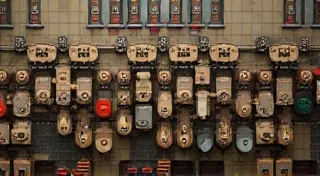Building a Simple Ham Radio Transceiver: A Journey of Discovery
Welcome to a world where imagination meets engineering, where the hum of technology transforms into the voices of distant lands. This website is dedicated to the fascinating pursuit of building a simple ham radio transceiver. It's a journey that combines technical skill with creative problem-solving, and the rewards – both tangible and intangible – are truly remarkable. Whether you're a seasoned electronics enthusiast or a curious beginner eager to explore radio communication, you're in the right place.
The allure of building a simple ham radio transceiver goes far beyond simply transmitting and receiving signals. It’s about understanding the fundamental principles of radio technology, delving into the intricacies of electronics, and forging a connection with a community of passionate amateur radio operators. This site aims to guide you through that process, providing detailed instructions, insightful perspectives, and a supportive community.
The Allure of Homemade Radios
For centuries, humanity has sought ways to bridge distances and connect with one another. Radio technology represents a pinnacle of this ambition. While commercially built radios offer convenience and advanced features, there’s something uniquely satisfying about crafting your own. The feeling of accomplishment when you finally hear your own voice crackling across the airwaves, transmitted from a device you built with your own hands, is an experience that cannot be replicated. This site aims to guide you through that process, focusing specifically on the craft of transceiver building, providing detailed instructions, insightful perspectives, and a supportive community.
Understanding the Foundation: The Alchemy of Components
Before we dive into the construction itself, let's consider the building blocks. Our journey starts with the The Alchemy of Components: Transforming Raw Materials into Radio Voices. These aren't just generic parts; they're carefully selected components that, when combined correctly, produce a functional transceiver. Understanding the function of each resistor, capacitor, and transistor is crucial to grasping the larger picture. This “alchemy” requires patience and a willingness to experiment, but the results are well worth the effort. We're transforming raw materials into voices that can travel across vast distances – a truly magical concept.
The Steps to Building Your Transceiver: From Blueprint to Broadcast
This site will be your roadmap, guiding you through every stage of the construction process. We'll begin with the basics, covering everything from selecting your components to assembling the final product. Our guide, From Blueprint to Broadcast: A Step-by-Step Journey of Transceiver Creation, breaks down the complex transceiver building process into manageable steps, offering clear instructions and helpful diagrams. Don’t worry if you encounter challenges along the way – we’re here to help!
Navigating the Radio Spectrum: A Cartographer’s Perspective
Radio waves don’t just appear out of thin air. They exist within a carefully managed spectrum. To become a responsible and effective ham radio operator, you need to understand this landscape. The Cartographer of Radio Frequencies: Understanding the Spectrum Landscape will introduce you to the different bands, frequencies, and regulations that govern radio communication. Think of it as learning the rules of the road – essential for safe and harmonious operation.
The Technical Heart: Embracing Imperfection
Building electronics isn't always a precise science. Components vary, soldering joints can be imperfect, and unexpected things can happen. This is especially true when building analog circuits. The Clockwork Heart of a Transceiver: Embracing Imperfection in Analog Fabrication explores the nuances of analog design, highlighting the importance of observation, adjustment, and troubleshooting. Don't be afraid to experiment and learn from your mistakes – a key aspect of successful transceiver building– and finding joy in the process.
The Importance of Regulation and Community
Operating a ham radio transceiver comes with responsibilities. As an amateur radio operator, you’re bound by regulations and expected to operate responsibly and ethically. The Guardians of the Airwaves: Regulations and Licensing for Amateur Radio Operators provides an overview of the licensing process and the rules you need to follow.
Furthermore, the ham radio community is a vibrant and supportive network of enthusiasts. The Constellation of Connections: Networking with Fellow Ham Radio Enthusiasts emphasizes the importance of connecting with fellow operators, sharing knowledge, and participating in local and regional events. It’s a community that welcomes newcomers and celebrates the spirit of innovation and the shared pursuit of transceiver building.
Antennas and Signal Optimization
Your antenna is the key to maximizing your transmission range and reception quality. Understanding antenna design and experimenting with different configurations is essential. The Geometry of Signals: Antenna Design and the Dance of Electromagnetic Waves covers the principles of antenna design, explaining how different antenna types work and how to optimize their performance. A crucial element in realizing the full potential of your built transceiver.
If you’re interested in exploring alternative antenna setups, The Language of Loops: Exploring Different Antenna Configurations offers an introduction to the world of loop antennas, a popular choice for achieving directional gain and reducing interference.
The Challenges and Rewards of DIY Radio
The journey of building a simple ham radio transceiver isn’t always smooth sailing. There will be challenges, setbacks, and moments of frustration. The Patience of Persistence: Overcoming Challenges in DIY Radio offers encouragement and practical advice for overcoming these hurdles. It’s about embracing the learning process and finding joy in the journey, regardless of the outcome.
A Legacy of Innovation and Future Proofing
The field of radio technology is constantly evolving. Thinking about the future and designing for adaptability is essential to ensuring your transceiver remains relevant and useful for years to come. The Legacy of Innovation: Designing for Future-Proof Transceiver Architecture encourages you to consider the long-term implications of your design choices.
The Sounds of Humanity: Connecting with the World
Static and Stories: Listening for Humanity in the Radio Spectrum invites you to tune in to the voices of people around the world, sharing their stories, cultures, and perspectives. It’s about connecting with humanity on a deeper level through your newly built radio.
Troubleshooting and Refining Your Build
Even the most carefully planned transceiver can encounter problems. Being able to diagnose and fix these issues is a critical skill for any DIY radio enthusiast. Whispers from the Void: Troubleshooting Techniques for the Audacious Builder provides practical guidance on troubleshooting common problems, from faulty wiring to signal interference.
The Modular Approach & A Shared Heritage
Consider breaking your transceiver build down into smaller, manageable subsystems. The Silent Symphony of Subsystems: Modular Design in Transceiver Construction explores the benefits of modular design, allowing you to focus on individual components and streamline the construction process.
Finally, to truly appreciate where we are today, it is valuable to trace the lineage of radio. Resonance and Remembrance: Tracing the Lineage of Radio Technology explores the history of radio technology, from its earliest pioneers to the modern innovations that shape our world today.
Welcome to the world of DIY radio! We’re excited to have you join us on this incredible journey of transceiver building and discovery.


















